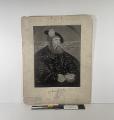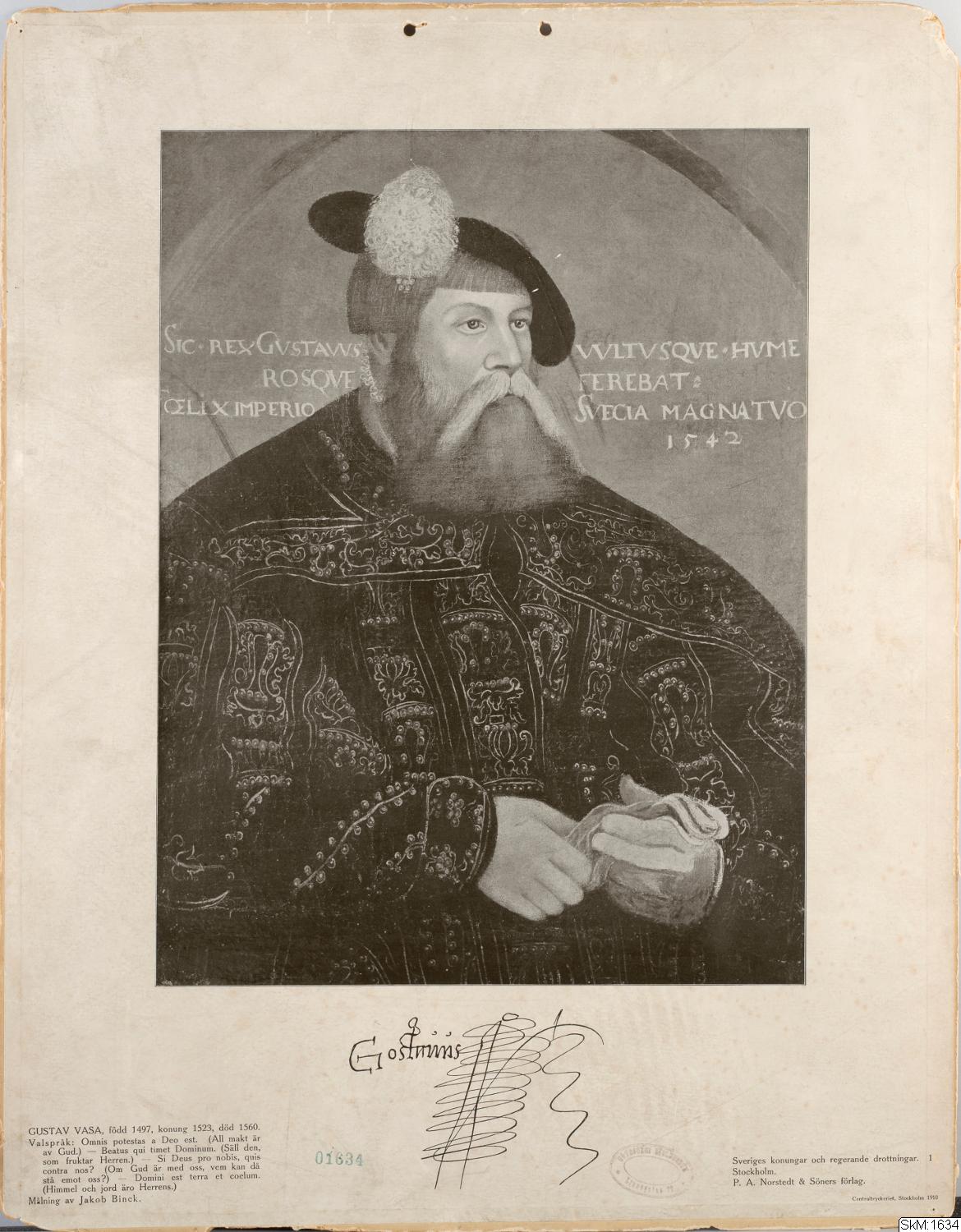Gustav Vasa, or Gustav I, was the king of Sweden between 1523 and 1560.
The black and white wallchart shows a so-called three-quarter portrait with the king partly in profile. He is looking to the right and has a beard and a moustache. He is wearing a patterned jacket and a dark barette (a type of beret) with a bright plume. He is holding a pair of leather gloves in his hands.
The spirals under the portrait are Gustav Vasa’s signature and autograph. Also included are the years of his reign and his four mottos:
“All power is of God.”
“Blessed is he who fears the Lord.”
“If God is with us, who is against us?”
“The Lord is the earth and everything in it.”
It is not uncommon for Gustav Vasa to be depicted as the father of Sweden. With him, the idea of a Nordic union was put to rest and the journey towards the Swedish nation of today was begun. Another common depiction of the king is that of a powerful parvenu who did not hesitate to involve himself in all matters large and small with a furious frenzy.
The portrait was painted at the beginning of the 1540s by a German painter, Jacob Binck, who was the court painter to the Danish court under Christian III. As part of the negotiations between Sweden and Denmark in September 1541, Gustav Vasa asked if he could “borrow” Binck from Christian III. Binck then worked as court painter in Sweden in 1541 and 1542 and painted the most well-known portrait of the king. It is one of the oldest remaining portraits of him.
Gustav Vasa was around 45 years-of-age at the time. For Vasa, it was highly important both to spread images of himself as king and to ensure that such images were of a high quality and showed his best side. Painting royal portraits was almost a genre in its own right, which is why artists were able to move from court to court. Gustav Vasa considered it important that he was painted by an artist who was suitable for other kings given that he himself was not from a clear line of monarchs. From an international perspective, the House of Vasa was new and untested as a royal dynasty.
The portrait has become one of those images that is used time and time again whenever anything is written about Gustav Vasa. It is therefore not unusual that it served as the model for a wallchart. The same image was also used on the Swedish five kronor note between 1965 and 1981.
Gustav Eriksson Vasa was born in 1497 and died in 1560. He was Protector of the Realm from 1521 until 1523, until he was elected king of Sweden on 6 June 1523 when Sweden exited from the Kalmar union. It is for that reason that the National Day of Sweden is celebrated on 6 June. Later in history, Gustav Vasa was elevated to father of the nation and transformed into an important national symbol.
Gustav Vasa was married three times, to Catherine of Saxe-Lauenberg, Margaretta Eriksdotter and Catherine Stenbock. He fathered eleven children. Three of them, Eric, John and Charles, also went on to become Swedish kings.
From the series "The Kings and reigning queens of Sweden", 1910.



 ARTIKLAR I WIKIPEDIA
ARTIKLAR I WIKIPEDIA ARTIKLAR I WIKIDATA
ARTIKLAR I WIKIDATA BILDER I WIKIMEDIA COMMONS
BILDER I WIKIMEDIA COMMONS





